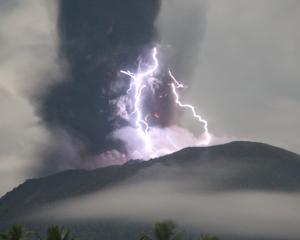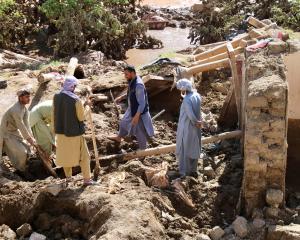The remnants of Hurricane Isaac have dumped rain across drought-stricken parts of the lower US Midwest after the storm killed at least 30 people on its trek across the Caribbean and Louisiana and Mississippi, authorities said.
Rainfall between 3 to 5 inches (7.6-12.7 cm), and up to 8 inches (20 cm) in some areas, was expected to hit much of the middle Mississippi River Valley and Ohio River Valley on Saturday and Sunday, U.S. forecasters said.
But Dan Peterson, a forecaster at the National Weather Services' Hydrometeorological Prediction Center in College Park, Maryland, said flash flooding was not expected to pose much of a problem.
"The rain is going to be occurring in areas that are parched and have greater capacity for accepting rainfall," Anderson said.
Flood warnings were in still effect for the Kansas City area as well as south-central Illinois, however, as what was left of Isaac headed east on track to make its way into the central Appalachians by Monday.
At least five deaths in Louisiana and two in neighbouring Mississippi were blamed on Isaac and residents of the two states still suffered from power outages and widespread flooding on Saturday, authorities aid.
President Barack Obama, who declared a disaster in Mississippi and Louisiana on Wednesday, is scheduled to visit the region on Monday.
Isaac was the first hurricane to strike the United States this year and it hit New Orleans almost exactly seven years after Hurricane Katrina devastated the city, causing an estimated 1800 deaths.
More than 500,000 homes and businesses remained without electricity across Louisiana on Saturday morning, leaving them without air conditioning under sweltering temperatures, local government officials said.
Isaac lingered over New Orleans for the better part of two days, providing a first and successful test of the city's new $14.5 billion flood-control system assembled after Katrina. Areas outside those flood protections fared worse.
At least one levee was overtopped southwest of New Orleans, leaving some homes under 12 feet (3.6 metres) of water. New Orleans was struck by 20 inches (50 cm) of rain, many other locations in Louisiana and Mississippi logged more than 10 inches (25 cm) of rain.
Isaac was expected to be a mixed blessing for the drought-parched Midwest farm belt, since experts said its rains came too late for this season's crop of corn and most soybeans.
The worst drought in nearly half a century remains deeply entrenched across nearly two thirds of the United States.
Isaac's rains could help speed up pasture recovery, however, and get the U.S. winter wheat crop off to a good start.
The U.S. Department of Agriculture on Tuesday is to release estimates of Isaac's damage to cotton and rice crops in the Mississippi Delta and lower Mississippi Valley region.
Isaac killed 23 people in its passage over Hispaniola, the Caribbean island shared by the Dominican Republic and Haiti, before barreling into the U.S. Gulf of Mexico.
On the heels of Isaac, Tropical Storm Leslie churned over the open Atlantic Ocean on Saturday, about 410 miles (660 km) east-northeastern of the Caribbean's Leeward Islands.
Leslie was packing top sustained winds of 70 miles (110 km) an hour, as it moved west-northwest at 18 mph (30 kph).
But U.S. forecasters said it posed no immediate threat to land and was not expected to become a hurricane before veering away from the Caribbean and heading further out to sea in north-northeastern direction on Tuesday.












